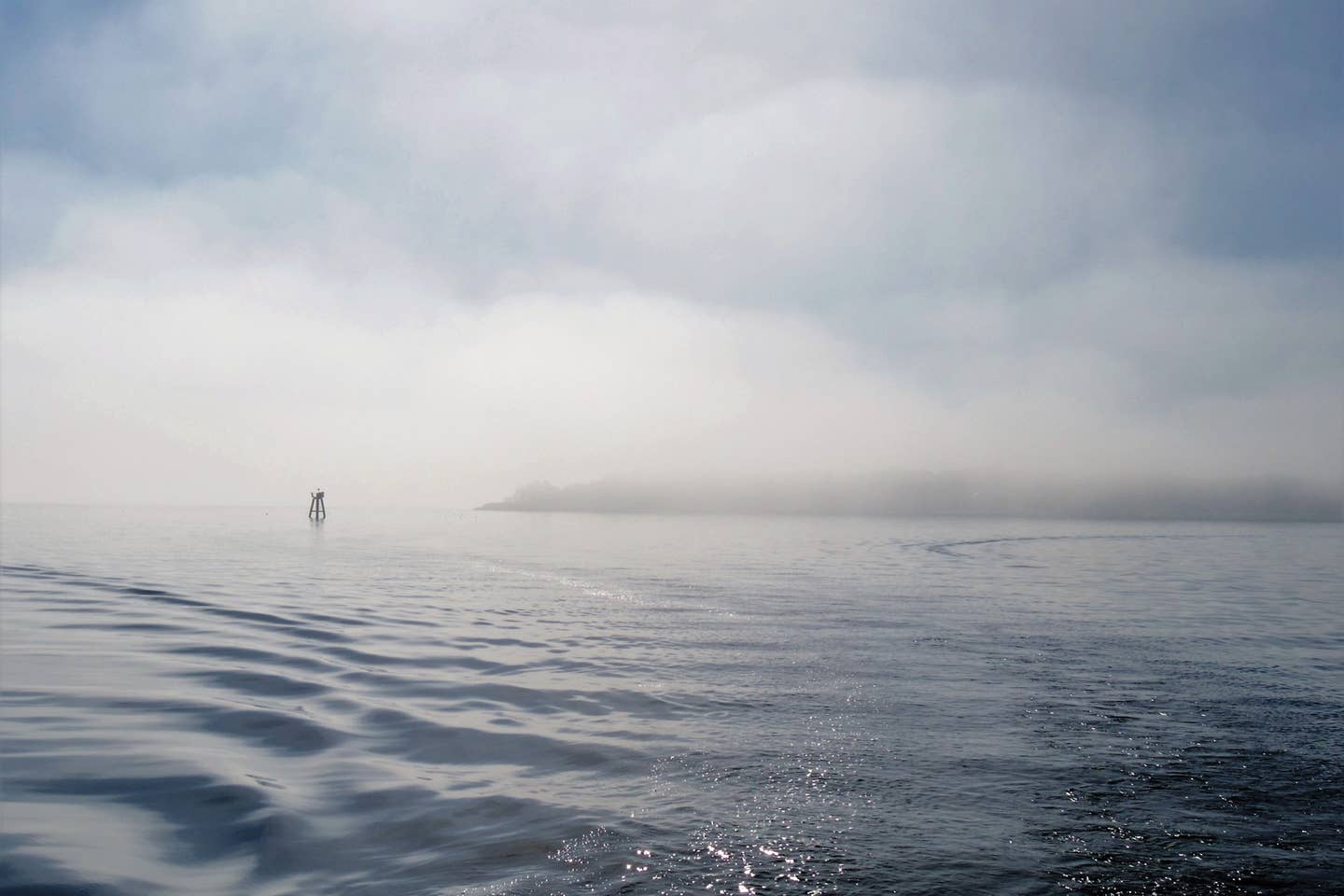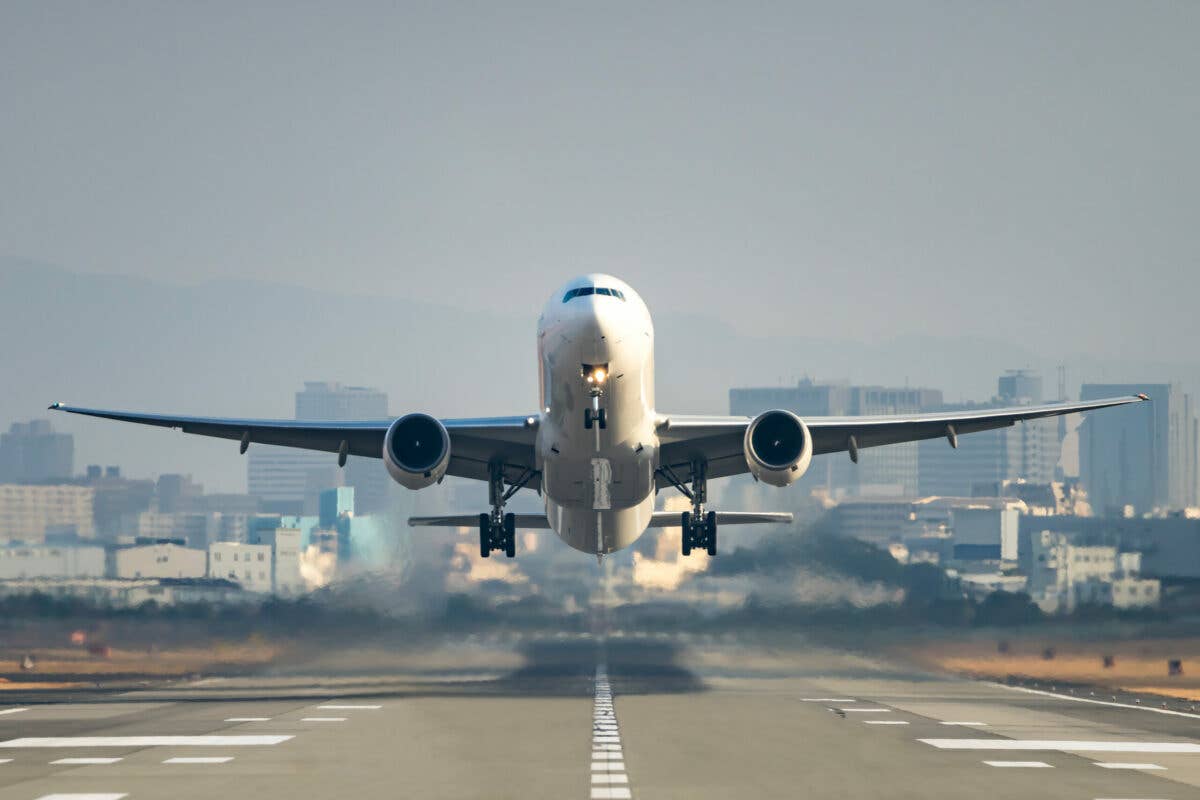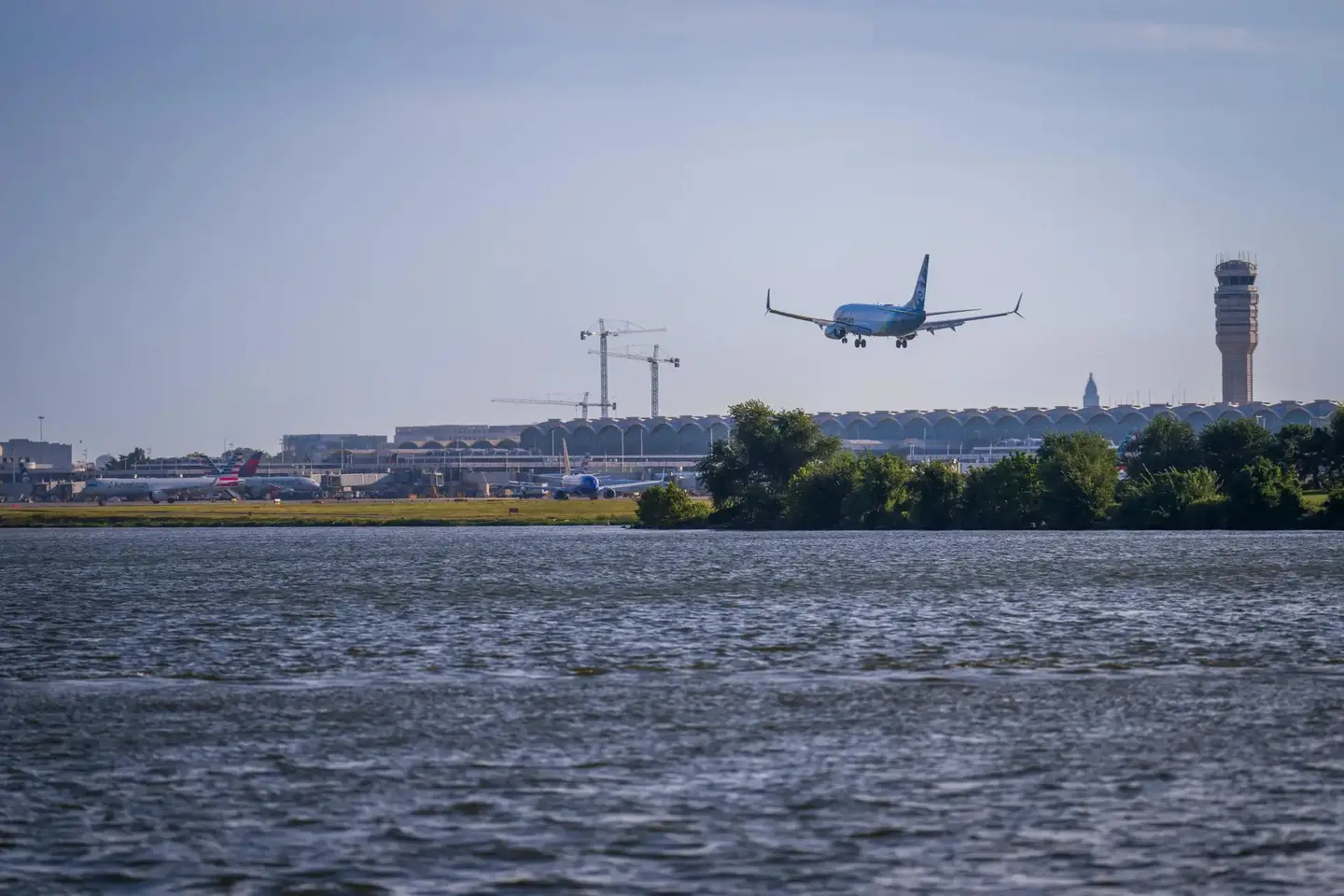
“In the final moments of the flight, the helicopter had turned westward and apparently gained altitude.” Tomas Picka/Shutterstock
In May 2019, two men took off from Tipton Airport (KFME) in Fort Meade, Maryland, for a pleasure flight. They were in a Guimbal Cabri G2 helicopter, and had hoped to find and photograph a relative of the passenger who was fishing from a boat in the Chesapeake Bay.
The morning was foggy; when the pilot called to file the flight plan required by the Washington, D.C., special-flight-rules area, the briefer reported that an airmet for possible IFR conditions was active until evening, and VFR was not recommended. When asked if he would like a weather briefing, the pilot replied that he did not need any other information.
The helicopter crossed the Chesapeake Bay alongside the Highway 50 Bay Bridge. The passenger snapped pictures from the western side. The opposite shore, less than 3 miles away, was barely discernible through the fog, but the tops of the 400-foot pylons were visible, and conditions—though below fixed-wing VFR minimums—were easily flyable for a helicopter.
Reaching Maryland’s Kent Island on the east end of the bridge, they turned southward. The passenger texted his relative to ask where he and his friends were fishing and received a “pin” showing the boat’s GPS location. The passenger texted back that the boat was “too far west. We are hitting the wall that we can’t fly through.” The “wall” was the 30 nm veil surrounding Washington’s Class Bravo airspace.
The helicopter maneuvered south of Kent Island for 10 minutes without seeing the boat. A man who was fishing with his son in the waters between Kent and Putnam Island, 4 miles to the south, described seeing the yellow copter “very low to [the] water in dense fog,” then moments later hearing a loud boom. Learning by radio that a helicopter had crashed, they hurried toward the scene of the accident, hoping to be of assistance. They found only debris scattered on the water.
The pilot, 38, had 104 hours total time, all logged in the accident helicopter, which he rented frequently from the flight school at which he had trained. He did not have an instrument rating, and the helicopter was not instrument-qualified—facts which figured largely in newspaper reports but whose bearing on the accident was uncertain. Despite the witness report of the helicopter being “very low,” ATC recordings indicated that it remained 175 feet or more above the water until radar contact was lost.
The NTSB identified “the non-instrument-rated pilot’s continued visual flight into instrument meteorological conditions, which resulted in an inadvertent descent into the water,” as the probable cause of the accident. The diagnosis was somewhat circular because the only evidence of the helicopter straying into IMC—unless you construe IMC to mean any condition, including darkness, haze or whiteout, that obscures the horizon—was the crash itself. Contributory, the Board said, was “the pilot’s decision to conduct the flight at a low altitude without sufficient cues to aid in the perception of attitude and altitude.”
The pilot’s decision-making, both before and during the flight, can certainly be seen as a cause of the fatal crash, but it was not a direct or “proximate” cause. It merely set the stage for what would later happen. The pilot’s lack of an instrument rating is neither here nor there; he did not intend to fly into cloud, and there were no clouds, as such, for him to fly into. The weather conditions—an indefinite ceiling above 500 feet and visibility greater than 2 miles in fog—were within the boundaries of routine VFR helicopter flying.
Still, the pilot was a comparative novice. The flight-service briefer had recommended against VFR, and the flight school’s rental agreement, which the pilot had signed, required 6 miles visibility and a 3,000-foot ceiling for cross-country flights unaccompanied by a CFI. So, his decision to fly on that particular day, in those conditions, was frankly insubordinate. But he was a confident pilot. He had already made a round-trip to Tennessee in the helicopter; a quick sortie over the bay should be no problem at all.
The convoluted path of the flight’s final minutes, recorded by ATC radar, and the fact that the occupants were looking for a boat on the water suggest one scenario: the “moose-spotting” kind of accident in which the pilot becomes fixated on an object below and either stalls or spirals into the ground while circling it. But the details of the radar track do not support that hypothesis. The helicopter was neither extremely low nor was it circling tightly. In fact, the transponder’s final Mode C return indicated that the helicopter may have gained, not lost, altitude before crashing.
Possibly the pilot had climbed a little, found himself without a discernible horizon, and lost control of the helicopter while trying to recover. Unlike the fixed-wing private license, the helicopter private does not require any hood time, and so a low-time helicopter pilot is probably even less likely than a low-time fixed-wing pilot to make good use of an attitude indicator in an upset were one installed.
“The ability of the pilot to detect any loss of control or a trajectory toward the water,” the NTSB wrote, “was significantly reduced as a result of the extremely low altitude in which the flight over water was conducted, the low visibility, the lack of instruments on board to allow for instrument flight, and his lack of instrument training and experience.”
One of the photographs taken by the passenger as the helicopter flew alongside Bay Bridge perhaps contains the key to understanding the accident. The sky is gray, the water is gray—no line separates them. With the bridge alongside, orientation is easy. But in the final moments of the flight, the helicopter had turned westward and apparently gained altitude, and there were no distinct vertical or horizontal objects in the environment. The bridge was miles away, and the western shore was probably invisible. It is not hard to imagine the pilot losing the horizon, becoming disoriented, rolling over into a steeply banked dive, and recognizing the situation only when it was too late to recover.
Each element of the situation seems innocuous in itself. The ceiling is not that low. The visibility is good enough. There are no obstacles over the water. Turns, descents, climbs—they are routine maneuvers. But put them together and stir, and the results may be unexpected.
I wonder—without evidence—whether the helicopter’s clear windscreen, which surrounds the occupants with an almost unobstructed panorama, makes it easier for a pilot to become disoriented, by introducing a greater number of potentially confusing elements into the field of view. As instrument pilots know, it is sometimes a relief—when weather is dim and murky and the world is reduced to a few shades of gray—to stop peering out the windows and turn your gaze to the simple, circumscribed and crisply defined artificial horizon. For the pilot of the Cabri, no such safe harbor was to be found.
Another Lost Horizon
A classic, unforgettable instance of inexplicable disorientation in a helicopter was the January 26, 2020, accident that took the lives of Kobe Bryant, his daughter and their friends. The 8,000-hour-pilot elected to punch up through a thin overcast. The maneuver wasn’t legal, but it must have seemed easy and safe. However, in the space of a few seconds, the helicopter, rather than climb straight ahead, turned left, descended and flew into a hillside. The NTSB’s exhaustive analysis of the accident shed no new light on the central question of how and why it could happen, but it did reinforce the important lesson that when you’re close to the ground—or water—a few seconds are all it takes to become disoriented. Once disoriented, a pilot may need more than a few seconds to reorient, and that may not be enough.
This story appeared in the June/July 2021 issue of Flying Magazine

Sign-up for newsletters & special offers!
Get the latest FLYING stories & special offers delivered directly to your inbox






